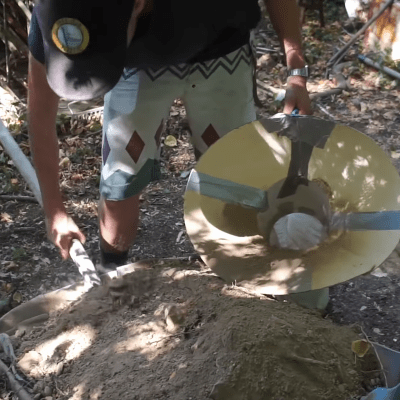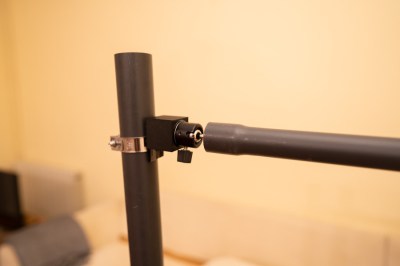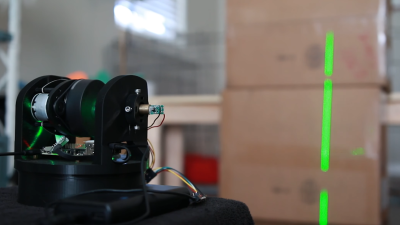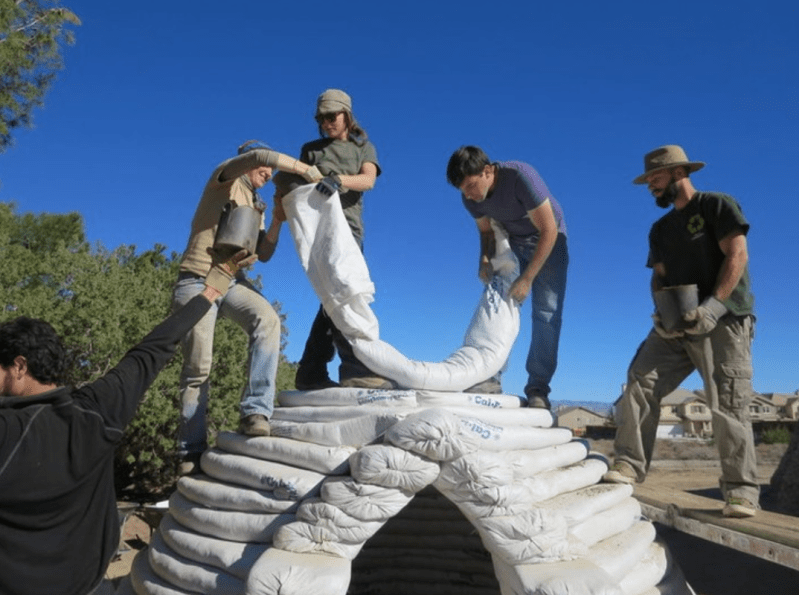Homes in different parts of the world used to look different from each other out of necessity, built to optimize for the challenges and benefits of local climate. When residential climate control systems became commonplace that changed. Where a home in tropical south Florida once required very different building methods (and materials) compared to a home in the cold mountains of New England, essentially identical construction methods are now used for single-family homes in any climate. The result is inefficient and virtually indistinguishable housing from coast to coast, regardless of climate. As regions throughout the world are facing increasingly dire housing shortages, the race is on to find solutions that are economical and available to us right now.
The mission of CalEarth, one of the non-profits that Hackaday has teamed up with for this year’s Hackaday Prize, is to address that housing shortage by building energy-efficient homes out of materials already available in the areas that they will be built. CalEarth specializes in building adobe, or earth, homes that have a large thermal mass and an inexpensive bill of materials. Not only does this save on heating and cooling costs, but transportation costs for materials can be reduced as well. Some downside to this method of construction are increased labor costs and the necessity of geometric precision of the construction method, both of which are tackled in this two-month design challenge.
Low-Tech Solutions to Complex Problems
One of the biggest time sinks when building this type of adobe house is that the construction requires long bags to be filled with earth, traditionally done with two or more people in order to keep the bag open and allow it to fill properly. The CalEarth Dream Team tackled this issue by creating an “earth funnel” which allows someone to hold it open with one hand while shoveling earth into the bag with the other. A rubber band around the bag allows the long bag to unravel itself as its filled, which saves the labor of one person. The funnel is made from laser cut material — although it could be hand cut with a simple pattern — and assembled using only a rivet gun.
 While the design of the funnel works and shows tremendous promise for this type of building method, there are some design improvements to work out in the future. Figuring out a more ideal size is at the top of the list, as some users found it to be slightly too large, along with adding more handles to the funnel itself. Another problem is that the rubber band has a tendency to slide off, so that system needs to be fine tuned as well. Finally, the team hopes to ship these out with detailed instructions on their use so that their future users know both how to assemble the funnel and how to use it properly for maximum effect.
While the design of the funnel works and shows tremendous promise for this type of building method, there are some design improvements to work out in the future. Figuring out a more ideal size is at the top of the list, as some users found it to be slightly too large, along with adding more handles to the funnel itself. Another problem is that the rubber band has a tendency to slide off, so that system needs to be fine tuned as well. Finally, the team hopes to ship these out with detailed instructions on their use so that their future users know both how to assemble the funnel and how to use it properly for maximum effect.
Geometry is Important
While the funnel saves a tremendous amount of time, the other major source of lost labor is making sure that the walls have the correct shape. The SuperAdobe building method involves taking the long bags of earth and laying them on top of each other, building up to create the walls. Once the walls are in place, narrower and narrower rings are laid in order to create a domed roof. In between each ring a strip of barbed wire is laid which prevents the bags from slipping. However, the rings need to be precisely positioned to maintain the integrity of the structure, so typically a compass (the kind used for transferring measurements, not the kind for path finding) is used made out of two poles. The traditional tool is cumbersome to use, however, so the CalEarth team designed an attachment which solves a number of these problems. 
The new compass, called a “pipe sail”, has more degrees of freedom than otherwise available, allowing the measuring pole to rotate around the base pole more easily and also fold flat when not in use, which allows much more freedom of movement inside the structure during construction. It is also much easier to raise and lower as the bags are laid down, saving the team time when measuring the new walls. Finally, it has some dust resistance as well, allowing it to last longer with less maintenance.
High Tech Solutions Work, Too
Of course, the pipe compass still involves a lot of tedious and non-automated work. This is where the high-tech compass comes in. The team built a LIDAR-based compass in addition to the pipe compass to similarly measure the distance from the center of the structure to the wall or dome under construction. When the earth tube is in the correct position, the compass measures the distance from the center of the structure and shines a green laser on it when it is placed at the correct distance. This allows the builders to get an automated, visual cue that they have placed them properly without using a physical tool. The builders can use their hand to get an indication of where the bag should be placed before actually laying it down, and then get it as precise as possible once it has been laid down.

During the two-month challenge window, the team only had enough time to get a proof-of-concept for the LIDAR-based compass to work. Some planned improvements to it relate to making it tolerate the environment better by improving the housing, rotating platform, and mounts. Some other improvements focus on the reliability and performance of the device itself, and the team plans to improve laser stability and accuracy and their algorithm’s accuracy in future versions as well. Of course, all of the designs and code for everything has been made open source and can be found at the project’s page.
The Future of SuperAdobe
As housing costs rise and city centers grow this important work gives a larger number of people more access to housing that might not otherwise have it. Using the ground beneath our feet, wherever we happen to be, is a viable solution for sustainable housing that suits the climate and environment that home happens to be in, without needing to truck as many supplies from distant areas. The icing on the cake is that the future home dwellers can even have a hand in the building of their own homes, and they might just last longer than any modern stick frame house to boot.




















Were the houses in the background made from superadobe?
Hmm. With a little ingenuity, maybe a ‘compass’ could be made that produces a correct catenary dome.
“Bouncy castle” style inflatable form?
I like alternative construction methods, but there is a problem. 35 years ago a friend built a house into the side of a hill, with only one wall exposed, it did wonders for energy efficiency. The problem was that he couldn’t find homeowners insurance for a house that wasn’t a “modern” stick frame building. That may not be a problem now 35 years in the future. I hope.
So, he built a “Hobbit-tat for his Humanity”?
B^)
If insurance was actually worthwhile, it wouldn’t be profitable. Save your money instead.
Insurance changes binary outcomes (“yay, saved money!” vs. “oh no, lost it all!”) to amortized value (“spent a little bit of money on insurance”). That’s worthwhile if you only have one life and not huge savings.
Only worthwhile if a loss occur.
Otherwise all money paid is lost. Absolutely all. Not a penny left. All for nothing.
As always, trust your instincts.
Look up the concept of ergodicity and geometric (time weighted) averages versus arithmetic (multi universe) averages. Ole Peters in particular has some interesting talks about this. Jpa’s ‘one life’ comment reminded me of this fascinating topic.
No, for the love of god. Don’t ever trust ones instincts when it comes to statistical probabilities. Has the work of kahneman taught us nothing? Calculate, check the probabilities and do the bloody math. Instinct is rubish for making economic decisions.
If you cannot afford to lose it, insure. If you can, do not. That is the simple lesson. But this goes for any object or service one can trade…
+1 for corne
“Only worthwhile if a loss occur.”?
So are the seat belts, airbags etc. ;)
A simple rectangular shell of a house with good insulation would probably be just as cheap as a dirt house, and faster to put up.
It’s the land, basement, second floor, drywall, windows, doors, plumbing, electrical, flooring, counters, etc that make up the bulk of the cost of a traditional house. Making it out of dirt won’t save a dime on modern luxuries.
Very much this. The cost of modern housing has a lot to do with modern building codes and what we now view as necessities. If you don’t need electricity or indoor plumbing you can get a pretty nice house dirt cheap from the parking lot at home depot, they’re called sheds.
Not to say that building codes are bad, we probably live in some of the safest and most comfortable houses ever in history thanks to these laws, but they do have real costs that most people don’t think about.
Actually, this assumption isn’t quite correct. I happen to live in an older house (current “installment” is roughly about 200 years old – a friend lives in one that is over 600 years old) and can tell you that manual work (“labor”) is BY FAR the most expensive component of setting up or restoring such a building. Building these houses out of “modern” material (drywalls – meh!) wouldn’t make them hold as long as they do. And yes, these houses are made from wood, mud and dirt – and they still look splendid.
A “traditional” house doesn’t need drywalls. It needs plumbing and electricity, but those aren’t “the bulk” of costs by far.
By the way, rectangular is one of the most “wrong” shapes for a house if you want to keep energy loss low. Round would be perfect but doesn’t work well with book-shelfs on the walls :-) A compromise are the six- and eight-edge-shaped houses modern builders like to create.
Does anyone that live in these things have workshops? Can an earth dome be made big enough to house metal or woodworking shops inside? If so, and if I ever find myself living in the rural SW I’ll definitely keep this idea in mind. If not then let’s save it for a museum.
This is exactly what Kris Harbour is doing: https://www.youtube.com/playlist?list=PLEZ2hvCDKUpHxaWL4ePdaZwYh9fYsO1IV
In other climates and regions, straw-bale construction is gaining popularity. Huge insulative properties, and they stack like bricks, offering relatively square walls. They can look virtually the same as a stick-built house, unless you look at the windows and doors. A neighbor built one as a teaching camp-in and it was mostly up in a weekend.
How do they hold up for fire resistance?
I know for fire resistance and insulation capabilities like the straw bale designs, the hempcrete structures are a way to go.
Bags of dirt adobe.
There are actually a lot of houses left empty by investors, 10% of all housing stock in some nations, so wouldn’t it be more resource efficient to force them to make them available, in a mutually beneficial manner?
Reminds me a decades ago at Tech wondering about all the empty cars including myself on many trips, other than the driver, I’d see driving the 9 to 13 hr drive. Then being drunk at frat parties like WTF this and that can be done. Later to read a U of M research paper noting an application to do risk assessment and other automation for ride sharing capabilities due to observations like myself and many others have made. Next thing you know the ride sharing is a business that is profitable appears book value and market value.
Barbed wire seems a weird choice to me. It’s annoying to handle and would poke holes in the bags (maybe not an issue if they never need to be reused). But it’s also not the cheapest and needs transportation.
I wonder if it wouldbe a better solution to paint the bags with a simple homemade glue mixture and sprinkle them with sand between each layer. The glue may not even be necessary.
Is it compliant with building codes and other legislative reqs?
Wouldn’t neighbors protest?
Would people want to live in it.
These are questions that really matter when it comes to housing.
Don’t believe me? Look up Dymaxion house or monolithic domes.
Housing shortage in developed countries has very little to do with technology. Bulk of existing buildings around the world would never get built under existing laws. In many cases for the better. I lived in some of those. You wouldn’t believe what they could get away with just a century ago.
Don’t believe me? Just in NYC:
https://www.nytimes.com/interactive/2016/05/19/upshot/forty-percent-of-manhattans-buildings-could-not-be-built-today.html